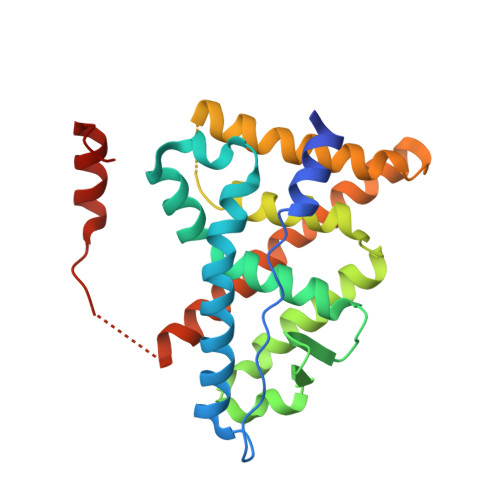A second binding site for hydroxytamoxifen within the coactivator-binding groove of estrogen receptor beta
Wang, Y., Chirgadze, N.Y., Briggs, S.L., Khan, S., Jensen, E.V., Burris, T.P.(2006) Proc Natl Acad Sci U S A 103: 9908-9911
- PubMed: 16782818
- DOI: https://doi.org/10.1073/pnas.0510596103
- Primary Citation of Related Structures:
2FSZ - PubMed Abstract:
Evidence is presented that the estrogen antagonist 4-hydroxytamoxifen (HT) can occupy not only the core binding pocket within the ligand-binding domain of estrogen receptor (ER) beta but also a second site on its surface. The crystal structure of the ligand-binding domain (LBD) associated with HT was determined to 2.2 A and revealed two molecules of HT bound to the protein. One was located in the consensus ligand-binding pocket, whereas the other bound to a site that overlaps with the hydrophobic groove of the coactivator recognition surface. Relative to the ERalpha-tamoxifen structure, helix 12 has been displaced from the coactivator recognition surface and occupies a unique position. Although it has been demonstrated that association of the antagonist with the core ligand-binding pocket is sufficient to induce an antagonist ligand-binding domain conformation, this structure suggests that small molecules may directly antagonize receptor-coactivator interactions. These results provide a direct demonstration of two binding sites for HT in ERbeta, as has been previously suggested for ERalpha by using biochemical methods, and represent a crystal structure of a small nonpeptide molecule occupying the coactivator recognition site.
Organizational Affiliation:
Lilly Research Laboratories, Indianapolis, IN 46285, USA.















